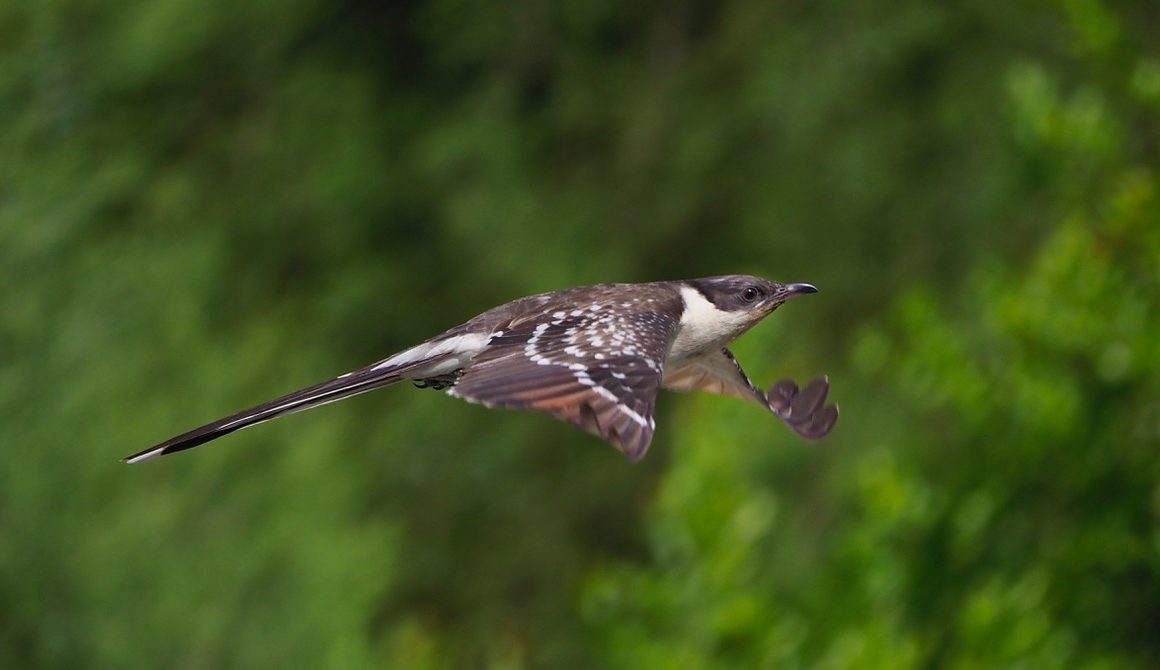
There are 154 species of cuckoos in the world, and they’re all a fascinating bunch. I reckon I’ve seen around 60 or them, which still leaves a lot to go. I’d really like to see a Coral-billed Ground Cuckoo (South-East Asia), while to see any of the Madagascan couas would be pretty cool (there’s 11 of them). I have encountered a few of the more quirky members of the family, including the brilliant and aptly-named African Emerald Cuckoo, India’s ultra-shy Sirkeer Malkoha, and the fascinating Lesser Ground Cuckoo in Costa Rica. However, my current favourite member of the family Cucilidae is the Great Spotted Cuckoo (GSC), a common bird in Cyprus in spring. It’s not a species you are likely to overlook, either, as it is extremely noisy, its cackling call carrying great distances.
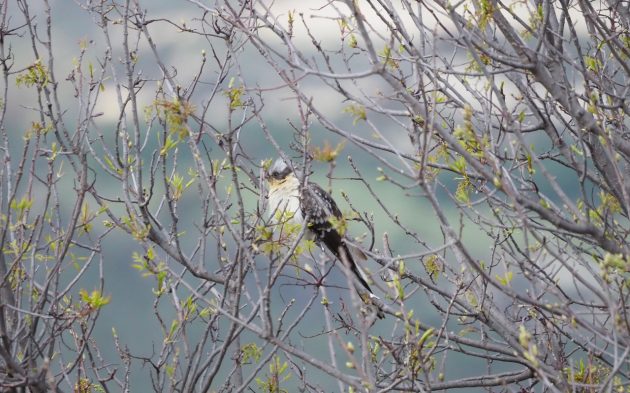
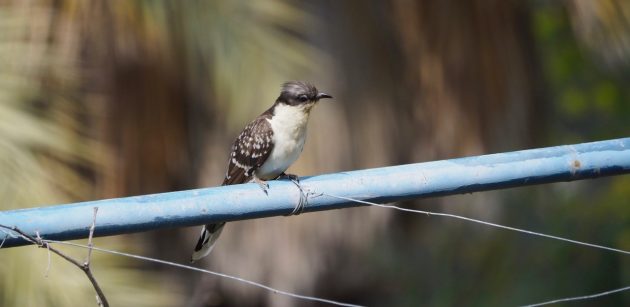
Perhaps the most curious thing about the Great Spotted Cuckoo is its distribution, for it is both a non-breeding Palearctic migrant to Africa, and a trans-Africa migrant. Birds that nest in southern Africa winter to the north in the tropics, while birds that breed in southern Europe and Turkey migrate south to, you guessed it, tropical Africa. According to The Birds of Africa Volume III, “In much of the tropics present throughout the year, with breeding and non-breeding birds usually indistinguishable”. I wonder whether birds that breed in Europe ever meet up with those nest in southern Africa?
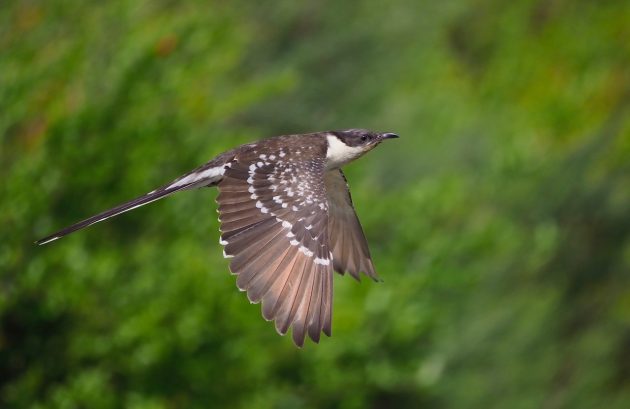
Great Spotted Cuckoos really do have spots
The GSC is a classic cuckoo in that it is a brood parasite: on Cyprus the Magpie is its favourite host. Unlike the Common Cuckoo, the young GSC doesn’t eject its foster parents’ eggs or chicks from the nest, but is reared alongside them. Apparently if there’s more than one GSC chick in a nest, the younger one is likely to starve. One one occasion during my recent visit to Cyprus we came across a GSC walking around on a quiet country road. It reminded me of a Roadrunner, which is, of course, also a member of the cuckoo family.
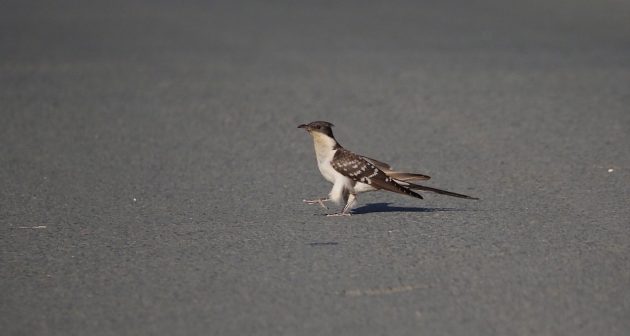
A Great Spotted Cuckoo pretending to be a Roadrunner
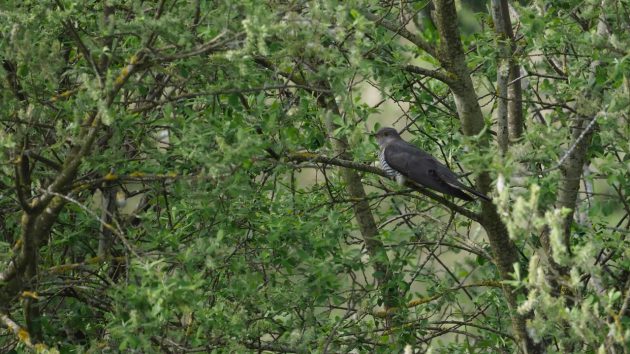
Common Cuckoo: in spring many pass through Cyprus on their way to Europe and Asia
Common Cuckoos also occur on Cyprus, too, though the majority of birds are migrants, moving between Europe, Asia and Africa. The breeding birds favour the hills of the Troodos Mountains, and it’s here that you are most likely hear their far-carrying call. Incidentally, the name Cuckoo is similar in many languages. In German its Kuckuck, in Spanish Cuco, in French Coucou Gris and in Italian Cucolo. We only heard Cuckoos once, though we also saw a couple of silent birds.
Unlike the GSC, which is the most obvious of the birds of the Cypriot hills, the Cretzchmar’s Bunting is the most unobtrusive, though it is common and widely distributed. It is one of the most range-restricted of European birds, breeding only in Greece, Turkey and adjacent areas. The call is typically bunting, with two or three soft notes, the last drawn out. It doesn’t exactly shout its presence, but it is the best way to find this subtly handsome bird. Like many buntings, it likes to sing from the tops of small trees or bushes. When you do finally find your bunting, you find that they are not really shy, and often allow a close approach.
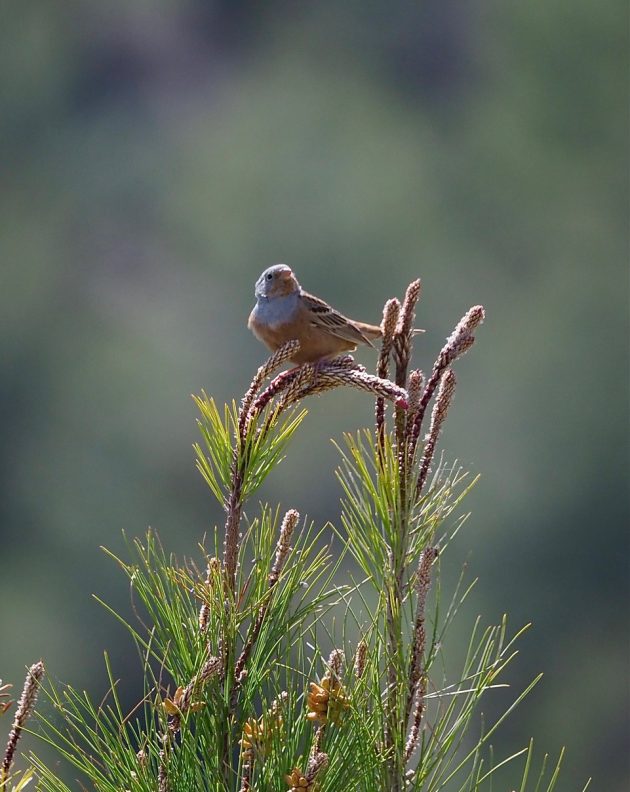
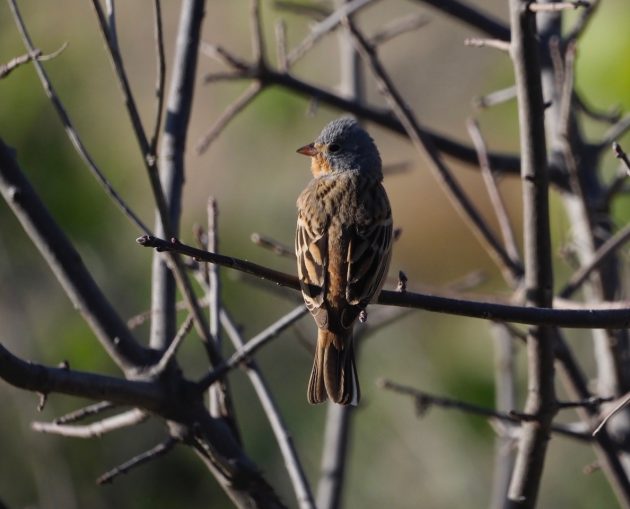
Subtly plumaged but handsome: a cock Cretzchmar’s bunting
The best places to find Cretzchmar’s Buntings are the foothills of the Troodos, where they like the vineyards and the old, crumbling hill terraces, for much of the agricultural hill land on the island has been abandoned.
Once you have climbed up into the Troodos Mountains you find an avifauna much more like that of northern Europe. Blackbirds and Wrens are common, and you will find Grey Wagtails on the streams. Coal Tits are abundant, but here they are of the endemic race cypriotes, with much blacker head and far more extensive black bib than the birds we see in Britain. Give it a few more years and there’s a good chance that it will be split into a full species, just like the Cyprus Scops Owl.
Jays are common in the pinewoods of the Troodos, and like the Coral Tit, are also a distinctive endemic race, glaszneri. There could be another potential split here, too, but it seems unlikely, as there are no fewer than 27 sub-species of Garrulous glandarius currently recognised. Like Jays everywhere, they are shy: my photograph was taken in the Botanical Gardens, where they are used to seeing people.
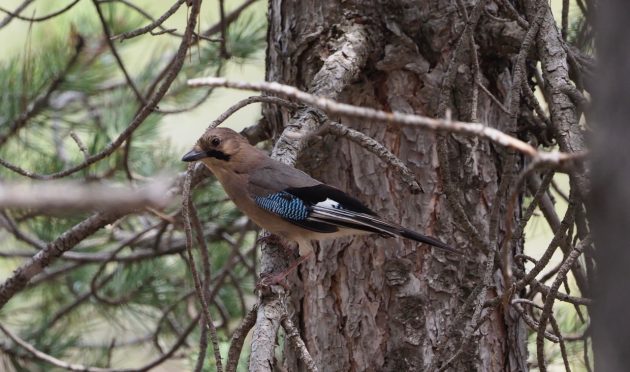
A Jay of the endemic Cypriot race glaszneri
It was in the Botanical Gardens, too, that I watched Red-rumped Swallows collecting mud for their nests (below). These attractive swallows are common in the hills, where they breed. Their English name is a misnomer, for pink-rumped would be far more appropriate.
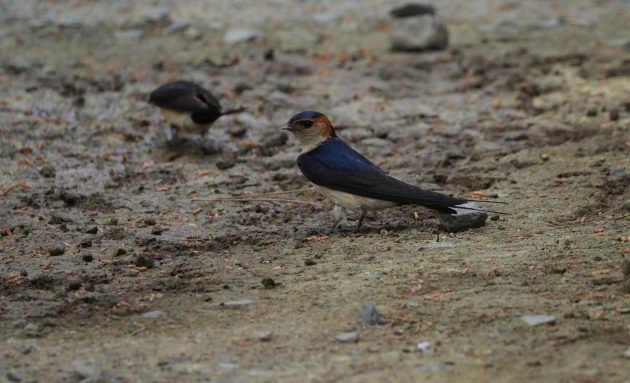
Eastern Imperial Eagles once bred in the Troodos, but the last birds disappeared over 30 years ago. Raptors are few, but with luck you should spot Long-legged Buzzards, a species that has increased on the island in recent years, There are a few pairs of Bonelli’s Eagles, too. Cyprus is one of those places where anything can turn up. In 2007, a Bateleur Eagle was seen on Cyprus, the first record for Europe. Now that would have been a good bird to see.













Leave a Comment